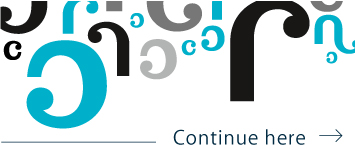The Chaconne from Johann Sebastian Bach's Partita No. 2 in D minor is considered one of the most impressive compositions in the violin repertoire. Many performers and researchers see it as more than just a technical masterpiece and interpret the piece as a musical expression of personal grief. Possibly written in memory of Bach's first wife, the Chaconne combines emotional depth with compositional rigour. Its effect is based on a quiet intensity that still moves today – and its decoding poses major questions for musicians and musicologists alike.
Bach Chaconne: Overview
1. The Chaconne – structure, number symbolism and intertextuality
2. The context of the Chaconne in the life and work of J. S. Bach
3. Arrangements and transcriptions of the chaconne
4. Important chaconne interpreters
5. Sheet music: important editions of the chaconne
6. The right violin for the chaconne – instrument selection in a historical and modern context
1. The Chaconne – Structure, Number Symbolism and Intertextuality
Structure of Bach's Chaconne
Bach's Chaconne is a monumental work with 256 bars – more than the four preceding movements of Partita No. 2 in D minor (BWV 1004) combined, which form its immediate context. It is based on the form of the ostinato, in which a recurring bass forms the foundation. In this, Bach draws on Italian tradition, in which the theme often appears and is difficult to recognise. In the chaconne, the bass motif alternates between a lamentobass (D-C-B-A) and a passus duriusculus.
Number symbolism and intertextual references in Johann Sebastian Bach's Chaconne
The complexity of the chaconne is reflected in the abundance of scholarly analyses, among which even the structures to be interpreted are often disputed. Various analyses assume a structure of 64 four-bar variations, while others divide the chaconne into 34 variations, in which the first four bars occur eight times and all eight bars occur another 26 times. The three-part structure – an initial section in a minor key with 33 variations, a major-key middle section with 19 variations, and a final section in a minor key with 12 variations – leads to a dramatic intensification as the number of variations per section decreases: The music becomes more intense and denser, the cadences occur earlier. In addition, diatonic and chromatic passages, minor and major tonalities, broken chords and scale runs contrast with each other. The polyphony, often only hinted at, is suggested by skilful voice-leading, as can also be found in a similar form in Bach's famous cello suites (see below, chap. 2).
Building on these structural observations, musicologists have not only analysed the musical architecture of the chaconne in musical terms, but also in numerological terms; many authors interpret the division into three sections (minor-major-minor) as a spiritual or biographical narrative. Heinrich Poos, for example, sees the number 4 as an allegory of the four elements or the four seasons (musica mundana), the four ages of man (musica humana) and the four strings of the violin (musica instrumentalis). Other researchers analyse symmetrical structures and suspect that the number 30 – the number of variations before and after the major section – is a deliberate compositional calculation that can also be found in other works such as the Goldberg Variations.
In her analysis, Helga Thoene goes particularly far. In her book ‘Ciaccona – Tanz oder Tombeau?’ she argues that Bach composed the chaconne as a tomb for his deceased wife. She identifies hidden chorales, based on the conversion of notes into numbers (gematrics), and discovers references to the church year in the composition. Judith Bernhardt argues along similar lines, using a numerical alphabet to identify names of the Bach family in the musical text. Critics such as Martin Geck consider such theses to be speculative, but emphasise that number symbolism played an important role in the Baroque period. Geck also warns against relying on printed editions, since only autographs authentically reflect the compositional process.
2. Context of the Chaconne in the life and work of J. S. Bach
The Chaconne is the final movement of the Partita No. 2 in D minor (BWV 1004), one of the six works from the cycle ‘Sei Solo. a Violino senza Basso accompagnato’ (BWV 1001-1006). According to the fair copy, this cycle was written in Cöthen in 1720, although its origins may possibly date back to his time in Weimar (1708-1717). In Cöthen, Bach found ideal conditions: Prince Leopold of Anhalt-Cöthen was extremely enthusiastic about music, the court orchestra was excellently staffed and instrumental music was particularly encouraged.
Bach's Chaconne as a polyphonic solo work
The ‘Sei Solo’ and the Cello Suites (BWV 1007-1012) demonstrate Bach's deep familiarity with the playing technique of the respective instruments. Despite the lack of a basso continuo, he manages to create dense polyphony and complex harmony. Chordal solo melody, pure monophony and suggestive polyphony are combined in a unique way.
The Chaconne occupies a special position – both in terms of virtuosity and expression. Its formal rigour and emotional depth make it a key work in Bach's oeuvre and a highlight of solo violin literature.
3. Arrangements and transcriptions of the Chaconne
Arrangements of Johann Sebastian Bach's Chaconne in the 19th century
Over time, Johann Sebastian Bach's Chaconne has been the subject of numerous arrangements and transcriptions. As early as the mid-19th century, musicians began adapting the work for other instrumentations. Leading figures such as Felix Mendelssohn Bartholdy and Robert Schumann found it incomprehensible that Bach had written this partita without any accompaniment. Mendelssohn published a piano accompaniment in 1847, followed by Schumann in 1853. The adaptation by violinist August Wilhelmj from 1885 is particularly concise, and he even added an orchestral version.
The piano transcriptions, starting in the 1850s, reached a peak in 1893 with Ferruccio Busoni's adaptation. It is so independent that it is often considered a work in its own right. Johannes Brahms also contributed to the variety of transcriptions – with a version for the left hand alone. In addition, versions were created for organ, string orchestra, string quartet, flute, guitar, harp and many other instruments.
Religious depth: Helga Thoenes' version of Johann Sebastian Bach's Chaconne
There is also a musical interpretation of the analysis by Helga Thoene discussed in Chapter 1: Thoene provided the work with the chorale quotations she identified, which, in her opinion, serve as a musical cantus firmus. Together with the violinist Christoph Poppen and the Hillard Ensemble, she recorded a CD in which the chorale and the movements of the partita are interwoven. This recording represents a particular form of reception that emphasises the religious and emotional depth of the work.
4. Important Chaconne interpreters
The chaconne has been and continues to be interpreted by the most important violinists in music history. In its original form for solo violin, it is available in recordings by Jascha Heifetz, Yehudi Menuhin and Gidon Kremer. Heifetz's 1952 interpretation is based on the sheet music edition of his teacher Leopold Auer, whose romantic playing style – including portamento and spiccato – is not without controversy.
Joseph Szigeti, a ‘grand student’ of Joseph Joachim, recorded a version in 1956 that combined Joachim's historically informed perspective with romantic interpretation. Arthur Grumiaux brought a polyphonic clarity to his recording in 1961, while in 1995 Christian Tetzlaff combined a baroque-inspired playing style with modern technique – fast tempi, sparing use of vibrato and ornaments.
J. S. Bach's Chaconne in historical performance practice
Historically informed interpretations on baroque violins, such as those by Sigiswald Kuijken (1981) or Rachel Podger (1997/1999), show the work in a new light. With an especially unusual performance, Joshua Bell secured a place in the history of the interpretation of the chaconne when he played it as a street musician in a Washington metro station in 2008.
Yehudi Menuhin considered the Chaconne to be the most important work for solo violin. The pianist Hélène Grimaud describes it as a ‘dance of life and death’ – a work of cathedral-like architecture, which, through its variations, appears like coloured light through stained glass windows.
5. Sheet music: Important editions of the Chaconne
The Chaconne has been published in numerous editions, which differ greatly in their editorial approach and interpretative orientation. Early romantic editions by Auer or Joachim characterised the 19th century. Later historically informed editions placed a high value on reproducing the sources as closely as possible. Some editions include fingerings, bowing marks and dynamic markings, while others offer only the pure musical text. For today's editions, the recognised Urtext editions form an indispensable basis; nevertheless, the history of adaptation and interpretation, with the historical achievements of important musicians, represents sources in their own right, which inevitably influence every new examination of Bach's Chaconne influences every new examination of Bach's Chaconne and can be fruitfully utilised for artistic approaches.
6. The right violin for the Chaconne – instrument selection in the historical and modern context
Which violin is best suited for interpreting Bach's Chaconne?
This question is of concern to both interpreters of historically informed performance practice and modern violinists. In Bach's time, instruments in the tradition of the Amati family, by Jakob Stainer and the early Stradivari were widespread. Stainer's violins in particular enjoyed an excellent, exemplary reputation in German-speaking countries – thanks to their exceptionally high resonance and warm, dark sound by historical standards.
An important fundamental aspect in the question of the right violin for the Chaconne is the difference between modern violins and baroque violins, as they were in Bach's time: With their shorter neck, lighter bass bar, gut strings and other structural differences, they offer a significantly different sound than the modern concert violins developed in the wake of Stradivari. The softer, more intimate sound of baroque instruments has become established for many contemporary interpretations and seems particularly suitable for the delicate structure of the Chaconne, not only for historical reasons. Overall, it should be noted that violins with a sound that is too mellow or sweet are less suitable for Bach's Chaconne, as they usually do not adequately reflect the tonal spectrum of the composition.
Interpreting Bach's Chaconne on modern violins
But as important as baroque violins are for works like the Chaconne, recordings with modern violins show that outstanding interpretations are possible on them as well – and not only when the playing style is based on baroque techniques. The use of vibrato, bowing technique and articulation creates a tension between historical authenticity and tonal assertiveness. Anyone playing Bach today faces a choice: the attempt to recreate the original sound world, or the goal of bringing Bach's music to life using contemporary means. Both approaches are valid – and both lead to the heart of the Chaconne.






